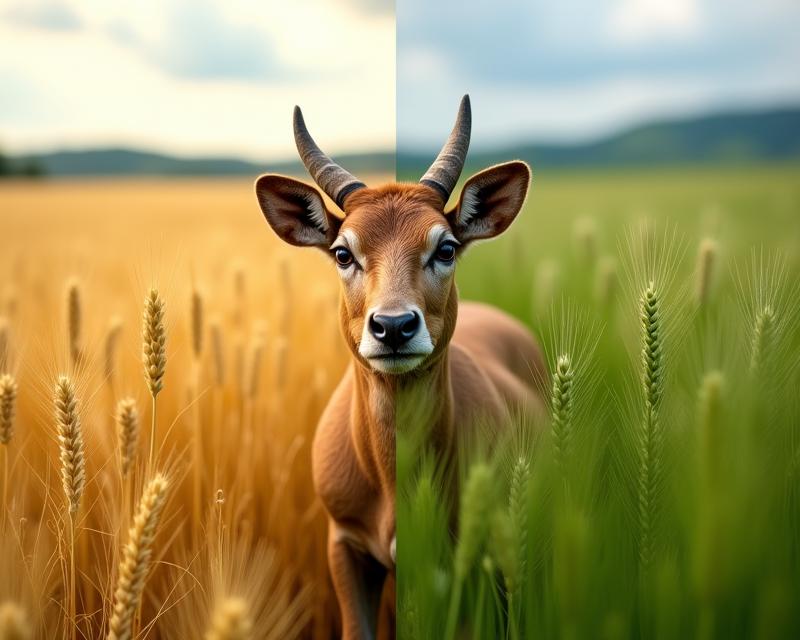Wheat vs. Rye: A Grain Showdown!
Publish in Crops el 21/07/2025 20:09
Wheat vs. Rye: A Grain Showdown!
Choosing the right grain for your farm or garden is a big decision! Two popular staples are wheat and rye, but they have distinct characteristics. Let's dive into a comparison of these grains, looking at their nutritional value, yield potential, and how well they adapt to different conditions. Understanding these differences can help you make the best choice for your agricultural endeavors.

Nutritional Powerhouses
Both wheat and rye are excellent sources of carbohydrates, providing essential energy. However, they differ in their nutritional profiles. Wheat is generally higher in protein and gluten, making it ideal for baking bread and pasta. It also contains a good amount of fiber, iron, and B vitamins. Rye, on the other hand, boasts a higher fiber content than wheat, particularly soluble fiber, which is beneficial for digestive health. Rye also contains more magnesium and phosphorus. Both grains offer valuable nutrients, but rye often edges out wheat in fiber content, making it a great choice for those seeking a digestive boost.
Yield and Adaptability
When it comes to yield, wheat typically produces more grain per acre than rye. This is largely due to wheat's higher genetic yield potential and its adaptability to a wider range of climates. Wheat thrives in warmer temperatures and requires more sunlight. Rye is a hardy grain that can tolerate colder temperatures and poorer soil conditions. It's often used in regions where wheat struggles. Rye is also more drought-tolerant than wheat, making it a good option for areas with limited water resources. Furthermore, rye can be a valuable cover crop, improving soil health and suppressing weeds before planting other crops.
Making the Right Choice
So, which grain is better? It depends on your specific needs and circumstances. If you're focused on maximizing yield and producing ingredients for baking, wheat is likely the better choice. However, if you're looking for a more resilient crop that can thrive in challenging conditions, offers superior soil benefits, or provides a higher fiber content, rye is an excellent option. Consider your local climate, soil type, and intended use when making your decision. Perhaps a diversified approach, incorporating both wheat and rye into your farming system, could be the most beneficial strategy for long-term sustainability and profitability. Don't hesitate to consult with local agricultural extension agents for advice tailored to your region.
- Wheat: Higher yield, higher protein, gluten-rich.
- Rye: Higher fiber, more drought-tolerant, cold-hardy.
Understanding these differences empowers you to make informed decisions about crop selection, contributing to a more successful and sustainable farm!





